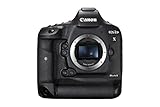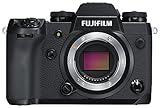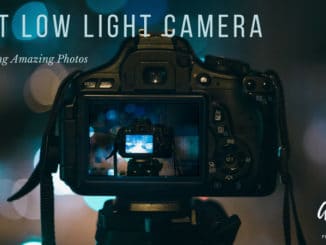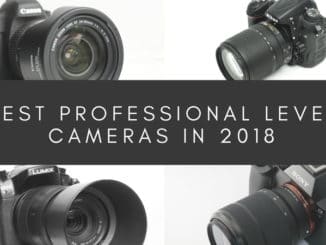 DSLR cameras are the iconic bulky cameras that are usually associated with professional photography. And mirrorless cameras are the new kids on the block. They’re more compact than DSLRs with less battery life thanks to the loss of the optical viewfinder.
DSLR cameras are the iconic bulky cameras that are usually associated with professional photography. And mirrorless cameras are the new kids on the block. They’re more compact than DSLRs with less battery life thanks to the loss of the optical viewfinder.
What’s sometimes less known is that they both make excellent video cameras. With features ranging from 4K DCI resolution to HDMI outputs and sensor stabilization, the lines between a photography and videography camera are blurred compared to even a decade ago.
So why not just buy a video camera if I want to shoot video? For one, a new dedicated device means you’re buying new accessories for it.
And today’s cameras are so incredibly good at shooting high-quality video that they’re applying immense pressure to the camcorder market. Nearly any feature a camcorder has can be added to a DSLR or mirrorless kit while still maintaining its value as a compact photography tool.
Improved condenser mic with wind filter? No problem. Neutral density filters? Easy. And I can have a larger sensor for my camera for less money than a camcorder.
What should I be looking for in a digital camera for video?
Sensor size
There’s tons of argument on whether the depth of field provided by a larger sensor is worth the extra cost in bodies and lenses but that’s a creative choice and entirely up to you. Larger sensors are worth looking at simply because the light collection area is bigger.
If you work in low light conditions and you still want to preserve video quality, you want the largest sensor possible for your budget. Fortunately, the full-frame cameras listed here all have excellent sensors for working in all lighting conditions. The Panasonic LUMIX GH5S is the only exception yet compensates in its own special way.
Megapixel Count
Megapixels are just as important to video as they are to photography. The more megapixels I have, the greater the resolution of the image. But that doesn’t always mean that more is better.
Let’s say I have a 12 MP camera and a 24 MP camera which both use full-frame sensors (sized 36.00 x 24.00mm). The more pixels I cram onto a sensor, the smaller those pixels have to be. So the pixels of the 24 MP camera are half the size of the pixels in the 12 MP camera.
So how does this affect my imaging? Smaller pixels have less area than larger ones. And just like the sensor itself, smaller pixels capture less light than larger ones.
If I’m a low-light videographer, then a lower megapixel count with a large sensor is what I want.
The Sony A7SII with its 12.2 MP stabilized sensor is the best camera for that, even though the total sensor resolution may make pixel-peeping photographers cringe.
But recording video in unchallenging lighting? Go for more resolution.
Image Stabilization
When recording on the move image stabilization is incredibly useful to have. While many DSLR lenses have built-in optical image stabilization, sensor-based stabilization is becoming more and more common.
Sensor-based stabilization works by balancing the sensor to control motions on the three rotational axis (roll, pitch, and yaw) and the two translational ones (fore and aft).
Sensor stabilization provides motion blur control that works with any lens you pair with the camera. What’s more, it sometimes stacks with the stabilization elements of the lens.
Maximum Video Resolution
Most DSLRs on the market today can record at least Full HD resolution (1920 x 1080p). For the vast majority of viewers, this is plenty.
But if you do videography for clients, you’ll be regularly asked for 4K video recording. At 3840 x 2610 for UHD 4K and 4096 x 2160 for DCI 4K, it has four times the resolution of Full HD video.
DCI is mostly used for films and video production, but UHD 4K is increasingly common in lower and mid-tier cameras.
Battery Life
I need to think about how long my camera can continuously run. Can it be powered via a USB battery pack while I change batteries?
The sheer size of DSLR bodies gives them space for larger batteries compared to other cameras.
Also, the optical viewfinders in DSLRs don’t use power, unlike the electronic viewfinders of mirrorless cameras. DSLR cameras have decent to excellent battery life, but videography is a constant drain on the stamina of any battery.
Mirrorless cameras are more limited in this regard because their sensors create the image of the viewfinder as well as act as the photo/video creator. The compact bodies also need smaller batteries to preserve their size advantage over DSLR cameras. But the cost is less stamina per charge.
Recording Time Limits
Another question to ask is whether the camera has any recording time limits. Many DSLR and mirrorless cameras can only record video for around 30 minutes before the system automatically stops creating the file. A decade ago, this was designed to prevent the processors from overheating and keeping file sizes down.
But now technology has improved beyond the point where this is still an issue. Now it has more to do with customs duties and getting around tariffs that would otherwise classify DSLRs as video cameras in the European Union. But some models and manufacturers gamble that videographers will flock to limitless recording models even if it means a price hike.
5 Best DSLR and Mirrorless Cameras for Video
Canon EOS-1D X Mark II
The EOS-1D X Mark II is one of Canon’s flagship models and priced to match. But it offers some unparalleled videography features and is one of the best DSLRs on the market right now. The 20-megapixel full-frame sensor provides an excellent balance between image clarity and light sensitivity.
Dual Pixel CMOS Autofocus
The impressive thing about Dual Pixel AF is that each pixel on the sensor is designed to simultaneously act as a phase detection sensor and imaging pixel. Many other cameras use Hybrid CMOS AF tech.
But with Hybrid AF each pixel is either an autofocus sensor or imaging pixel, not both. Dual Pixel technology gives the 1D X Mark II incredibly fast autofocus speeds in comparison across 80% of the sensor. This is especially relevant for videos where you want the autofocus system to smoothly track moving subjects, as demonstrated by Canon’s 2017 release video.
While manual focus has its place in videography, the Canon 1D X also includes Movie Servo Autofocus. It’s similar to the Continuous Autofocus function but not quite the same. Servo AF is used to adjust focus when you depress the shutter halfway. Continuous AF works at all times until you press the shutter. Fortunately, the two can be used together to constantly and intelligently control camera focus.
61 autofocus points is an impressive number for a DSLR and help ensure subject tracking is not only accurate but smooth across the frame. But as expected, the Mark II has the 29 minutes 59 second recording time limit of most DSLRs on the market.
Hybrid Photography/Video Options
The Dual DIGIC 6+ processors of the 1D X Mark II allow for constant and burst RAW photography as well as DCI 4K at 60 frames per second.The camera also exports 8.8 MP JPEG images from 4K recorded video in-camera using a still frame grab option. Panasonic pioneered this feature using their 4K Photo Modes.
This is a welcome addition as Canon (and most DSLR manufacturers) have been relatively slow in adding new features to their lineup. Still, frame grabs are perfect if you had been planning to shoot video only and encounter a moment that would be best captured in a photo.
But as Canon’s website notes: “Saving a still image from a single movie frame does not result in the same image quality as a normal still image.” Burst photography is still better. And with a frame rate of 14 fps (16 fps in Live View mode) and a buffer capacity of up to 170 RAW images the 1D X Mark II is quite capable.
GPS Technology
Outdoor photographers and videographers should also take note of the GPS capabilities of the Mark II. The built-in GPS allows the camera to create and embed GIS metadata into photos and videos that specify the location, elevation, and other valuable information about the shoot locale.
Using the GPS, the camera tracks the position of American, Russian, and Japanese satellites and auto syncs its internal clock to UTC. You can also specify how frequently the camera updates its GPS tracking. Like the other cameras here the 1D X Mark II is also weather sealed, ensuring light rain and dust don’t spoil your shoot.
Conclusion
Overall, the Canon 1D X Mark II is a feature-filled powerhouse of a DSLR. But at 1530 g (3.37 lb. / 53.97 oz.) it’s a rather hefty camera that may not be for everyone. Videographers well invested in Canon glass will find it to be appealing despite the weight and price.
- Fastest shooting EOS-1D, capable of up to 14 fps full-resolution RAW or JPEG, and up to 16 fps in Live View mode with new Dual DIGIC 6+ Image Processors
- Achieves a maximum burst rate of up to 170 RAWs in continuous shooting at up to 16 fps, and 4K movies using CFast cards in the new CFast 2.0 slot
- Improved AF performance through 61-point, wide area AF system with 41 cross-type points, improved center point focusing sensitivity to -3 EV and compatibility down to f/8
- Accurate subject tracking for stills and video with new EOS Intelligent Tracking and Recognition AF with 360,000-pixel metering sensor
- 4K video (4096 x 2160) up to 60 fps (59.94), with an 8.8-Megapixel still frame grab in camera. Full 1080p HD capture up to 120 fps for slow motion
Sony A7SII
The full-frame Sony A7S II is sometimes overlooked compared to others, but it’s a videography-oriented mirrorless camera that happens to also take stills. The internal 4K video recording at up to 30 fps is a noticeable upgrade over the HDMI-only recording of the original A7S. The A7SII can also use downsampling to achieve higher quality Full HD video resolution. Let’s see what else this pocket marvel has to offer!
Full Frame Low Resolution Sensor
The 12.2 megapixel full-frame sensor seems wasted in an area of ever-increasing megapixel counts. But photographers and videographers who do low-light shoots know that this is actually an intentional benefit.
Larger pixels are more sensitive to incoming light than smaller ones just like larger sensors collect more light than smaller ones. It’s all about the area exposed to light. And while high megapixel counts are great for detail resolution, if the pixels are too small you’ll find you need to make more exposure adjustments to compensate.
Sometimes you want to ensure your camera performs admirably in low-light without having to crank up your ISO. And having autofocus tracking work in those conditions can be challenging. The A7S II is probably the best low-light camera here!
Flat Video Profiles
Shooting video with flat color profiles is like shooting photography with RAW files. Flat color profiles preserve all of the color information that’s usually discarded in favor of smaller video sizes. The extra color information is also perfect for videographers who need to make adjustments with post-processing software.
Unlike the DSLR listings here the Sony A7S II (as well as the LUMIX GH5S and A7III) offer “RAW” for videography. SLOG 2 was introduced with the A7S, but the A7S II includes S-Gamut3, Cine/S-Log3, and S-Gamut3/S-Log3. S-Log3 works well for the dynamic range increase in complex light situations like dark shadows combined with bright lights (ex: the interior of churches).
5-axis Image Stabilization
Usually, tripods, gimbals, and glidecams are the tools for videographers looking for stability. But the sensor of the A7S II is stabilized across five axes (vertical, horizontal, pitch, yaw and roll) to ensure handheld photography and videography remain smooth and free of motion blur.
Sensor stabilization gives the user significant flexibility knowing that footage shot handheld won’t be unusably shaky. Shutter shock is also significantly reduced with the IS system of the A7S II. Tripods and gimbals still have their place as videography tools, but occasionally you’ll be able to shoot relatively freely with the built-in IS system of the A7S II.
Conclusion
The Sony A7S II is a versatile video camera that comes with a weather sealed body to ensure uncooperating weather never disrupts your plans. The low-resolution full frame sensor ensures you can get both autofocus and good exposure even in the darkest settings. At 627 g (1.38 lb. / 22.12 oz.) the A7S II is the lightest camera here, though the A7II and GH5S are only slightly heavier. And the price is extremely reasonable for a full frame kit.
- Full-frame camera with 5-axis image stabilization
- Fast and effective, enhanced Fast Hybrid AF
- 12.2 megapixels 10 35mm full-frame Exmor CMOS sensor Lens Compatibility - Sony E-mount lenses
- BIONZ X image processing engine ; Clear Image Zoom :Still/Movie: Approx. 2x
- In the box: Rechargeable Battery NP-FW50; Cable Protector; AC Adaptor AC-UUD11; Battery Charger BC-VW1; Shoulder strap; Body cap; Accessory shoe cap; Eyepiece cup; Micro USB cable
Nikon D5
The Nikon D5 is the first full frame camera by Nikon to offer 4K video recording. While it does not have flat log color profiles like the mirrorless options here, it remains one of the best DSLRs on the market for videography.
Full frame low resolution sensor
The Nikon D5 maxes out at 20.8-megapixels, providing a great balance of resolution to pixel sensitivity just like the Canon 1D X Mark II. The large sensor area ensures plenty of flight is captured for proper exposure in challenging light settings.
And in terms of sheer ISO power, the D5 has an extremely impressive ISO range of 100 to a very usable 102,400. Expanded using the Hi-5 options it reaches an incredible 3,280,000, but the noise levels make the video pretty unusable. Combined with the large sensor and pixels the Nikon D5 is an incredibly good low-light camera.
The 4K resolution of the D5 has a maximum frame rate of 30 fps. That’s slightly disappointing compared to the 60 fps cinematic 4K of some of the other cameras here.
The 1.5x crop factor when shooting 4K gives you some added reach when shooting distant subjects, giving it the view of an APS-C sensor. But most videographers would consider the crop factor a negative.
Multi-CAM 20K AF sensor module
153 focus points is an excellent number of AF points. And they have a wide coverage across the sensor to ensure your subjects stay in focus while continuously recording. 99 of these are cross-type sensors that give the D5 an edge when finding focus.
Standard phase detection points are a bit slower because they rely on vertical patterns to find focus. Horizontal patterns tend to confuse them. Cross-type points are slightly speedier because they detect both vertical and horizontal patterns accurately.
The Multi-CAM 20K includes its own processor separate from the rest of the camera to speed up autofocus acquisition and tracking.
Incredible stamina
The Nikon D5’s battery life is incredibly high even for a DSLR. The Canon 1D X Mark II has a CIPA rating of 1210 shots per charge. Being mirrorless, the Sony and Panasonic cameras struggle to achieve even a third of that (the A7III has half that stamina at 650 shots per charge).
But the D5 can last for an astounding 3780 shots per charge. While videography doesn’t quite translate into shots per charge, it is clear the D5 has significant stamina and recording power over the other cameras here.
If it didn’t have recording limits to get past tariffs, it would be even better for long shoots like documentary work. But 29 minutes 59 seconds is still a vast improvement over its initial release. Until a firmware update in 2016, the D5 was limited to 3 minutes of 4K recording time.
Conclusion
The Nikon D5 has one of the best sensors here in terms of video quality. Coupled with the high native ISO and powerful Multi-CAM 20K autofocus system the D5 will never fail to find focus, no matter the lighting. The D5 is one of the finest DSLR cameras on the market for videography.
- 20.8MP FX-Format CMOS Sensor
- EXPEED 5 Image Processor
- 3.2" 2.36m-Dot Touchscreen LCD Monitor
- 4K UHD Video Recording at 30 fps. CompactFlash (CF) (Type I, compliant with UDMA) XQD Type Memory
- Multi-CAM 20K 153-Point AF System
Panasonic LUMIX GH5S
The LUMIX Gh5S is an improvement over the already impressive GH5. The GH5 has been hailed as the best videography camera on the market and even better than many camcorders. Photography-oriented videographers may prefer the higher sensor resolution of the GH5, but the GH5S takes the cake as the Micro 4/3rds video camera of choice. The large, attention-grabbing “Rec” button on the GH5S tells us which should be more important to the owner.
Low-resolution sensor
The GH5S improves on its predecessor by using a sensor with half of the resolution of the GH5. While a resolution reduction sounds like a loss, the 10.2-megapixel of the GH5S gives it better low light performance by doubling the size of the individual pixels over the 20.3-megapixel sensor of the GH5.
This is extra important because Micro 4/3rds sensors (sized 17.00 x 13.00mm) are significantly smaller than those of full frame cameras (sized 35.00 x 24.00mm). Full frame sensors are nearly 4x larger so the GH5S needs all of the light sensitivity it can muster. But when ISO needs a boost, the GH5S has a maximum sensitivity of 51,200. Combined with the larger pixel size low light footage looks much cleaner compared to that of the GH5.
Multi-aspect sensor
The multi-aspect ratio sensor of the LUMIX GH5 allows it to use the full sensor area shooting 4K video. Sort of. The actual resolution of the sensor is 12.5-megapixels. But the sensor itself is physically larger than the area of the image circle. So when the sensor does a crop for recording 4K video the total area exposed is equal to the Micro 4/3rds lens’ image circle.
However, the new sensor loses out on the in body image stabilization of its predecessor. This makes it less useful for photographers, vloggers, and other videographers on the move unless you also plan to shoot with a glidecam or other stabilization system.
10-bit video & flat color profiles
It features internal capture of 4:2:2 10-bit 4K video recording as well as simultaneous recording to an external HDMI recorder (the Sony A7S II has 8-bit recording). 4K can be recorded at up to 60 fps using either standard (3840 x 2610p) or 25p cinematic (DCI at 4096 x 2160p). The GH5 also offers Full HD at up to an incredible 240 fps for slow motion videography.
Like the A7S II and A7III, the GH5S also can capture flat color profiles; V-LogL, V-Log Gamma, and a Hybrid Log Gamma for HDR (high dynamic range) recording in complex light situations. This makes it an excellent camera for videographers who need to do significant post-processing after a shoot. The V-Log profiles are also available with the GH5 but cost $100 to unlock through a firmware upgrade.
Flat color profiles are the RAW format of videography because they preserve color detail normally discarded in favor of smaller file sizes. Unfortunately, the 1-D X Mark II and Nikon D5 are a bit more photography-oriented and don’t offer flat color profiles for video recording.
Conclusion
The smaller field of view of Micro 4/3rds sensors means scene composition can be an adjustment for videographers used to the larger field of view provided by a larger sensor. But despite the smaller sensor, the LUMIX Gh5S is a marvelous low light camera that’s compact and versatile. The Vlog flat color profiles ensure you always have the highest quality video capture available. And the lack of a recording time limit on videography is a boon for exceptionally long shoots where you don’t wish to interrupt the flow.
- PROFESSIONAL PHOTO AND VIDEO PERFORMANCE: 10.2-megapixel Micro Four Thirds sensor and a significantly higher photoreceptive surface per pixel deliver an ultra-wide dynamic range; Dual Native ISO provides ultra-sensitive video capture with impressively low noise
- RUGGED SPLASH/FREEZEPROOF DESIGN: Durable magnesium alloy body withstands heavy use out in the field and is freezeproof down to -10-degrees; Splash/dustproof construction with weather sealing on every joint, dial and button
- UNLIMITED IN-CAMERA RECORDING OF C4K: Capable of internal SD card capture of 60p50p 8-bit, 30p25p24p 4:2:2 10-bit, 4K: 60p50p 4:2:0 8-bit, 30p25p24p 4:2:2 10-bit; 1080p up to 240fps and C4K 60p VFR
- ANAMORPHIC VIDEO MODE: 4K Anamorphic professional video production interchangeable lens camera system enables high performance, durability and mobility; Electronic shutter: 1/16,000 - 1; Operating temperature -10oC to 40oC (14oF to 104oF)
- CONNECTIVITY AND PORTS: TC In/Out/Synchro Terminal (via included BNC cable), 3.5mm mic jack with line input, 3.5mm headphone jack, 2.5mm remote socket, HDMI Type A Socket and USB-C 3.1 Socket; Available twin SD Card slots (UHS-II U3 compatible)
Fujifilm X-H1
The Fujifilm X-H1 is undeniably similar to the powerful and popular X-T2 yet comes with some improvements that solidify its place as the Fujifilm videography tool of choice. F-log preserves more color information, and the unique Film Simulations offer potent creative tools for videographers.
Flat color profile
The Fujifilm X-H1 offers log recording just like the Sony and Panasonic cameras here. Fuji’s F-Log preserves all of the color information captured by the sensor and provides top-quality video for future edits. F-log is only available while recording to an external recorder, however.
The X-H1 shoots DCI 4K with a bit rate of up to 200 Mbps but a maximum of only 24 fps. It also offers excellent in-camera editing capability as film simulations can be added to the raw footage. Internal recording maxes out at 4:2:0 8-bit recording with 4:2:2 available when recording externally.
Fujifilm Film Simulations
Many people gravitate towards Fuji because of their beautiful film simulations. Usable for either photo or video, they offer subtle adjustments that are far more aesthetically pleasing than the harsh adjustments other manufacturers provide.
Provia is the standard mode for capturing photos and videos. Vivid adds zest to primary colors. ASTIA replicates soft color film. ACROS is a form of monochrome that simultaneously enhances the sharpness of a scene. Classic Chrome subtly decolors the scene for a chrome appearance.
PRO Neg. Hi and PRO Neg. Std are contrast enhancements. Monochrome is black and white. And Sepia is that wild west coloring we all know and love.
The newest release, ETERNA, gives a more subdued cast to the colors in a video while enhancing the depth of shadows. ETERNA is well suited to videography and gives a uniquely cinematic mood to footage.
Stabilized, rugged construction
The X-H1 is weatherized just like the other cameras here yet uses even more magnesium than the already rugged X-T2. Dust and light water splashes are no trouble for the camera so long as you’re also using a weatherized lens.
And the sensor-based image stabilization ensures recording handheld doesn’t result in unacceptable levels of motion blur. The system covers five axes of movement and uses a dedicated dual processor system to ensure the image remains steady. Best of all, sensor-based stabilization works with any of Fujifilm’s lenses, whether they include lens-based stabilization or not.
Conclusion
The APS-C sensor of the Fujifilm X-H1 is relatively large, and the camera offers some excellent videography features. Unfortunately, the X-H1 has significant limitations in video recording time with a limit of 15 minutes when recording DCI 4K and 30 minutes with Full HD resolution. Using the VPB-XH1 Vertical Power Booster Grip, the X-H1 has a recording time limit of 30 minutes at 4K resolution.
The lack of 10-bit colors is also a strike against it. But for videographers on the move, the stabilized sensor makes it a great handheld recording option. And the film simulations make for quick edits that look beautiful straight from the camera.
- 5.5 Stops In Body Image Stabilization. Compatible with all XF and XC lenses
- New High Resolution EVF Magnification ratio of 0.75x and 3.69M dot resolution. The VF display is extraordinarily smooth, with a display time lag of just 0.005 sec and a frame rate of 100 fps
- Comprehensive video features new external film Simulation ideal for shooting movies, f log SD card recording and 1080/120P high speed video mode (1/2, 1/4 and 1/5 speed)
- Flicker reduction mode and improved AF Algorithms. Use focus lock to focus on another subject at the same distance, then recompose the picture
- 25 Percent Thicker magnesium alloy body than X T2, increased scratch resistance and surface hardness, dust and water resistant properties, ability to operate in temps down to 10 Degree C/ 14 Degree F
Overall Conclusion
Each camera here offers excellent features for videographers. As interchangeable lens camera users, the lens collection you already have will determine to a degree which camera you favor. It’s costly to switch systems after all, so if you already own an extensive collection of Canon lenses, the 1D X Mark II will loom a bit larger in your vision compared to the others.
DSLR and mirrorless have no inherent advantages to being better videography cameras. Mirrorless cameras make for smaller rigs, but DSLRs have more stamina. Many of today’s mirrorless cameras offer many more intriguing features to help pull customers away from the well-established DSLR market.
All of the cameras here offers 4K capture, but the Panasonic LUMIX Gh5S provides no recording limit, Vlog recording, and 10-bit color profiles. However, the smaller sensor gives it a 2.0x cropped field of view compared to a full frame camera that may be off-putting to some users. But quality-wise it sits on top of the pack.
The Sony A7S II has astounding low-light performance thanks to the low resolution and high area of the full frame sensor. Likewise, the Nikon D5 has a large sensor, medium resolution and an extremely capable autofocus system that works well no matter the lighting.
Meanwhile, the Canon EOS-1D X Mark II's advanced Dual Pixel autofocus and GPS capabilities ensure it remains a top-tier videographer’s tool. The Fujifilm X-H1’s high bit rate recording combined with its Film Simulation modes give it beautiful files with minimal processing needed out of the camera. The choice is yours, but not a single camera here is a poor choice.









Leave a Reply